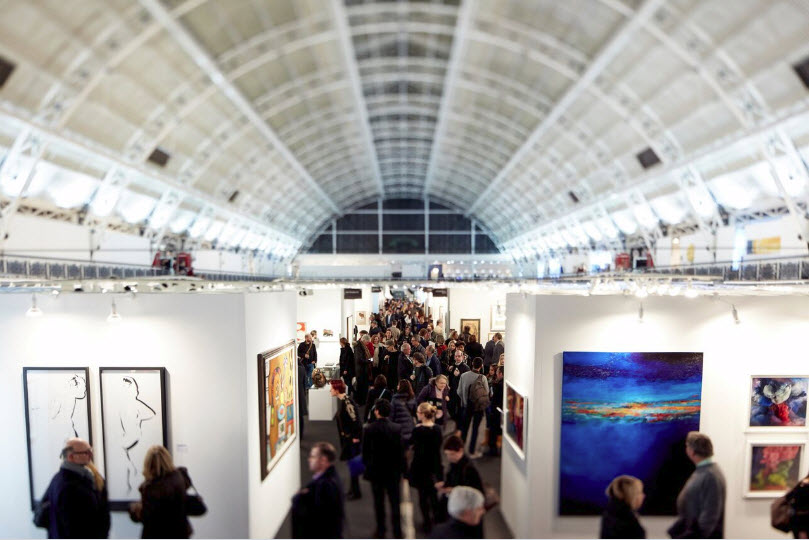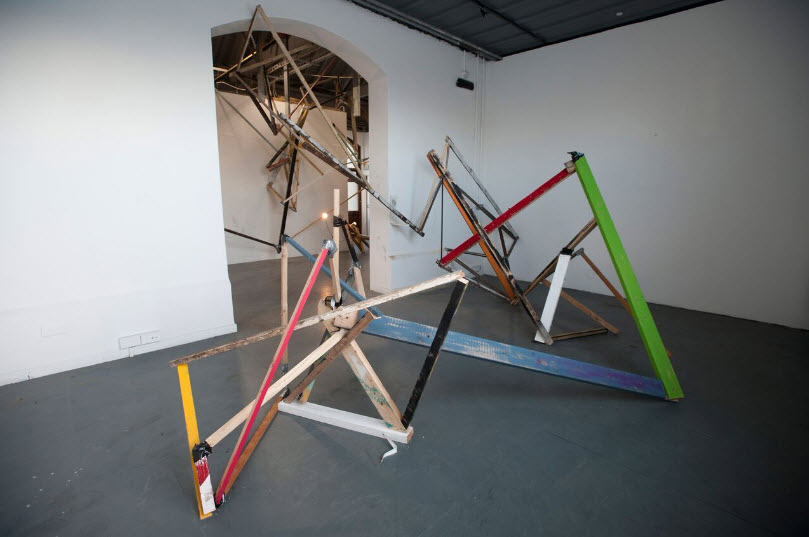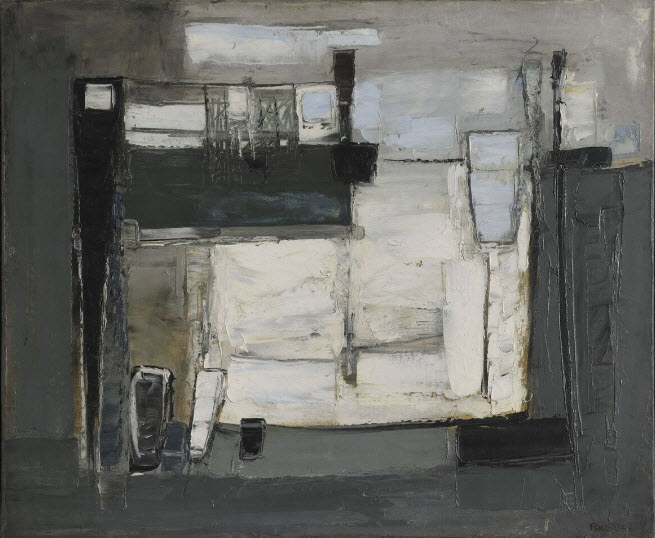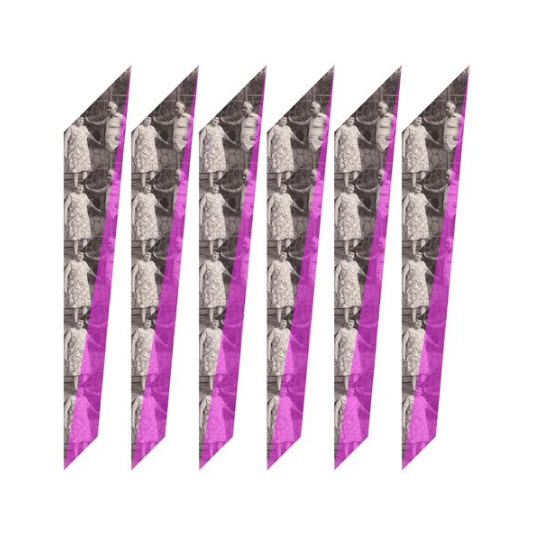Art World
artnet Asks: London Art Fair Director Tells All
Sarah Monk explains what to expect at this year's edition.

Sarah Monk explains what to expect at this year's edition.

Artnet Galleries Team

To kick start this year’s fair season, we sat down with London Art Fair director, Sarah Monk, to learn what this new edition brings. She is optimistic when describing current trends, collaborations, and what not to miss at the fair which opens its doors on January 18, running until Sunday in the capital city, while the art market faces singular challenges fueled by last year’s shocking Brexit vote.
Tell us what makes the London Art Fair different than other fairs. Why focus solely on British art?
Whilst a well established fixture for British galleries and collectors, London Art Fair has in recent years been developing into a more global affair. In fact, our 29th fair marks the most international edition to date with over a fifth of this year’s exhibitors coming from outside of the UK. We have galleries from 18 different countries, including China, France, Germany, South Korea, and the US.
With regards to what makes the London Art Fair unique, I think it’s rare to find such a healthy dialogue between the Modern British tradition and what’s happening today. You’ll find leading contemporary artists represented alongside exceptional work from major names in British art history, while Art Projects presents the freshest work and most thought provoking installations by international emerging artists.

London Art Fair. Courtesy of Mark Cocksedge.
Who is the audience for the London Art Fair? What is the price point for collectors?
London Art Fair has a very loyal fan base of visitors who return year on year and have done so since it began. Our audience includes major collectors and representatives from public and private institutions—museums, galleries, and corporate collections—together with well-informed individuals who buy regularly from the fair.
We understand that collectors’ have increasingly diverse tastes and the fair gives them the opportunity to view an enormous selection of work under one roof. We seek to enable and encourage collecting at all levels: from those buying their first work to major collectors, and this is reflected in the price point which allows a young collector, for example, to take home a limited edition print by Icelandic artist Katrín Sigurðardóttir for £130, or for the more seasoned collector looking to snap up what might be considered one of the top five Alan Davies from the 1960s at Goodman Fine Art at a guide price of £135,000.
Despite a volatile market, 2016’s edition of the fair attracted nearly 25,000 visitors. Are you expecting a similar turnout?
Yes, we’re certainly expecting similar attendance to our 2016 edition. We’ve always enjoyed our position of being able to launch the new season of art fairs and to help kick start the cultural year for the galleries and collectors who attend. It’s an opportunity to reconnect with people and reinvigorate with exceptional art after the winter break.

David Watkins, Interplanetary Trajectory (2014). Courtesy of Joanna Bryant Projects.
How has Brexit impacted your logistics and market expectations?
We’ve asked our galleries for their thoughts on Brexit as part of our annual exhibitor survey, and we’ll be announcing the results next week.
In general, our exhibitors are used to riding out the ups and downs of the economy, so we’re not too worried about the immediate impact of the Brexit vote. Uncertainty immediately following the referendum may have led some collectors to pause for thought last summer, but what we are hearing is that this has been balanced out in the latter half of the year by strong interest in quality Modern British art, with international sales taking advantage of the weakened pound.
Whatever the outcome of the Brexit negotiations, it is important that London maintains its competitiveness as a global art hub—whether through providing the right conditions for import and export of goods, or ensuring free movement of talented people who work in the sector.
Last year, several undervalued Post-War painters made a big impact at the London Art Fair, including Piano Nobile, John Plumb, and William Crozier. Can you predict any stand-out artists or trends for this year?
Modern British galleries appear to be feeling buoyant after a year in which there has been an international focus on private collections of David Bowie and Elton John. Castlegate House Gallery is bringing a portrait by David Bomberg of his stepdaughter painted in 1953, acquired from the recent “Bowie/Collector” sale at Sotheby’s.
Tying in with the Paul Nash show at the Tate, Piano Nobile is bringing a stunning oil on canvas work by the artist titled, Dahlias, from 1927, plus a never-before-seen on the market 1917 pen-and-ink sketch from his sketchbook that he was working on whilst an official war artist in the front-line trenches.
I’m also really looking forward to Pi Artworks stand which will prominently feature the work of Susan Hefuna, who will receive a major showcase of her work at the Guggenheim Abu Dhabi opening in March 2017.

Paul Feiler, Evening, St Ives Harbour (1955). Courtesy of Alan Wheatley Art
Is there a single artwork or installation you’re most excited about?
As part of Art Projects, Hanmi Gallery, who have spaces in London and Seoul, are exhibiting three contemporary Korean artists practicing new media and interdisciplinary art. We’re excited to host Jaye Moon’s playful site-specific installation Portable Housing, where we will see Moon entangle Lego blocks within the existing architectural structure of the fair, creating a space which encapsulates the essence of nomadic housing and an urban environment.
Photo50, our guest curated exhibition exploring current concerns in contemporary photography, continues to be one of the most eagerly anticipated features of the fair, and this year’s edition, curated by Christiane Monarchi, founding editor of the online magazine Photomonitor, promises to be no exception.
Can you tell us about this year’s collaboration with The Lightbox Museum? How did the exhibition of the Ingram Collection come together?
This year’s fair presented a timely opportunity for us to partner with The Lightbox gallery and museum in Woking, and to launch and celebrate their 10th anniversary since opening in 2007. The Lightbox is also home to The Ingram Collection of Modern British Art—widely acknowledged as one of Europe’s most significant collections from this era. Highlights will be shown in an exhibition at the fair titled “Ten Years: A Century of Art.” This will include key works by 20th-century artists such as Henri Gaudier-Brzeska, Barbara Hepworth, and Henry Moore.

Edouard Taufenbach, CINEMA [home stories] (2016). Courtesy of Noorforart Contemporary.
Our popular Photography Focus Day takes place on Wednesday, January 18, with guided tours, artist talks, and panel discussions exploring contemporary photographic practice. Visitors can also get advice on how to grow their photography collections from leading authorities in the photography world, including Brett Rogers OBE, director of The Photographers’ Gallery, who chairs a discussion on Collecting Contemporary Photography.
Thursday Late, in association with Peroni Nastro Azzurro, provides the opportunity to visit the fair after hours, and talks and tours will play host to a number of notable performances. Models and dancers will perform Collection Tautologique & Moral by Regina Frank in collaboration with Carlos Cabral Nunes, the curator of Perve Galeria, exhibiting at Art Projects.
London Art Fair (January 18–22, 2017)
Hours:
January 18: 11 a.m.–9 p.m.
January 19: 11 a.m.–9 p.m.
January 20: 11 a.m.–7 p.m.
January 21: 11 a.m.–7:30 p.m.
January 22: 11 a.m.–5 p.m.
Location:
Business Design Centre
52 Upper Street
London, United Kingdom